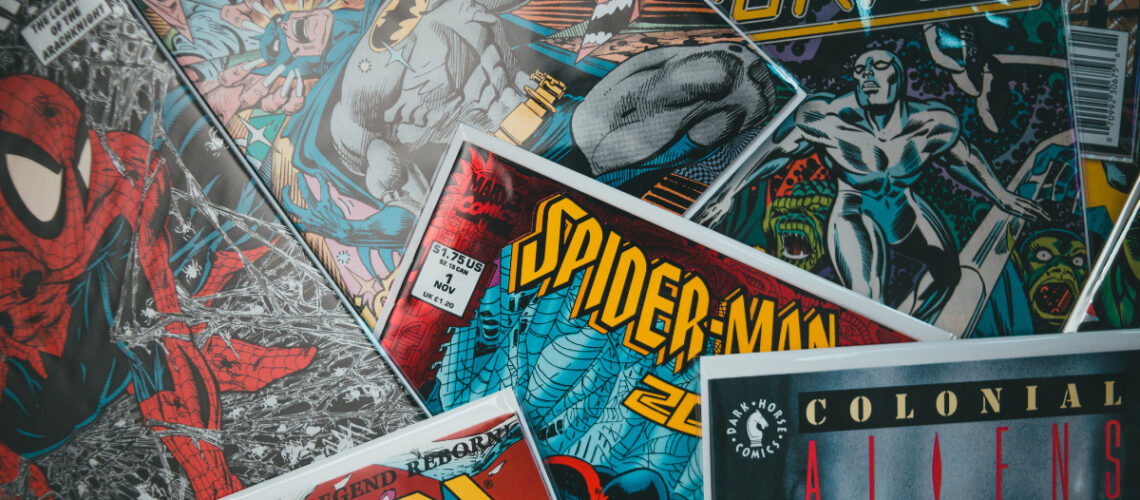Superheroes have long been a staple of popular culture, captivating audiences with their extraordinary abilities, moral dilemmas, and epic battles against evil. Over the decades, these iconic figures have evolved from the pages of comic books to become a dominant force in the entertainment industry, influencing society and leaving an indelible mark on our collective imagination. This blog post will delve into the remarkable journey of superheroes through the lens of pop culture, exploring their origins, transformation into cinematic sensations, and their profound impact on society.
The Birth of Superheroes in Comic Books
The story of superheroes begins in the late 1930s, during the Golden Age of Comic Books. Superman, created by Jerry Siegel and Joe Shuster in 1938, burst onto the scene as the archetype of the modern superhero. His debut marked the birth of a new genre, with characters possessing extraordinary powers, secret identities, and a commitment to justice. Superman’s success paved the way for other iconic heroes like Batman, Wonder Woman, and Captain America.
The Silver Age: Proliferation of Characters and Themes
The Silver Age of superheroes, which dawned in the late 1950s and extended through the 1960s, represents a pivotal and transformative era in the world of comic books. This age is characterized by an explosion of creativity and innovation that reinvigorated the superhero genre, forever altering the landscape of popular culture. It was a time when iconic characters like Spider-Man, the Fantastic Four, the X-Men, and the Avengers were born, each with their unique powers and relatable human flaws.
The Silver Age was marked by the infusion of science fiction elements into superhero storytelling, taking readers on mind-bending journeys through time, space, and alternate dimensions. The reimagining of classic heroes like the Flash, Green Lantern, and the Atom ushered in a new era of optimism and imagination, where these characters were no longer bound by the limitations of the real world. Moreover, the Silver Age gave birth to the multiverse concept, allowing for the existence of multiple parallel universes and versions of beloved heroes. The work of visionary creators like Stan Lee, Jack Kirby, Steve Ditko, and many others pushed the boundaries of storytelling and artistry, paving the way for more complex character development and social commentary. The Silver Age of superheroes remains a cherished chapter in comic book history, an era that continues to influence and inspire generations of fans and creators, ensuring its enduring legacy in the world of popular entertainment.
The Cinematic Revolution: Superheroes on the Big Screen
In the 1960s, superheroes made their foray into television with shows like “Batman” and “The Adventures of Superman.” These series brought colorful characters to life, albeit with a campy twist. While these shows had their own charm, they were a precursor to the monumental impact superheroes would have on the medium in the decades to come.
The 21st century witnessed a seismic shift in how superheroes were presented to audiences. Blockbuster movies, driven by advances in CGI and storytelling techniques, became the new frontier. Sam Raimi’s “Spider-Man” (2002) and Christopher Nolan’s “The Dark Knight” trilogy (2005-2012) redefined the superhero film genre. These movies brought depth to characters like Peter Parker and Bruce Wayne, exploring their humanity alongside their superhuman abilities.
The 2008 release of “Iron Man” marked the inception of the Marvel Cinematic Universe (MCU), a groundbreaking franchise that would revolutionize superhero storytelling. The MCU interconnected a vast array of characters and storylines, creating a cinematic tapestry unparalleled in scope. Blockbusters like “The Avengers” (2012) and “Black Panther” (2018) transcended traditional genre boundaries, appealing to a wide range of audiences and championing diversity and representation.
Superheroes as Cultural Icons
Today, superheroes are not just entertainment; they are cultural icons. They have permeated every aspect of our lives, from merchandise to theme parks. Comic conventions like San Diego Comic-Con draw tens of thousands of fans annually, celebrating the entire spectrum of pop culture but with superheroes at the forefront. Superheroes have also played a pivotal role in discussions about social justice, diversity, and representation, both on and off the screen.
The Evolution of Superheroes
The evolution of superheroes in pop culture is a testament to their enduring appeal and adaptability. From their humble beginnings in the pages of comic books to their current status as box office juggernauts and cultural touchstones, superheroes have come a long way. They have not only entertained but also provided a lens through which we view our society and its challenges. As technology continues to advance, and storytelling techniques evolve, one can only imagine how superheroes will continue to shape the landscape of pop culture and society in the years to come.
In a world where the line between good and evil often blurs, and where everyday heroes are needed more than ever, the concept of superheroes reminds us of the extraordinary potential within us all. Whether they fly through the skies, swing between skyscrapers, or simply stand up for what is right, superheroes continue to inspire, entertain, and unite us, proving that their evolution is far from complete.

